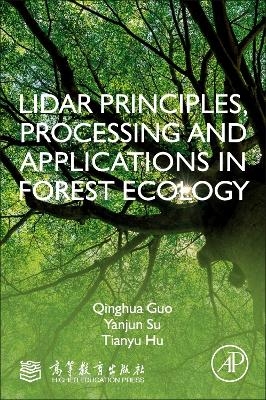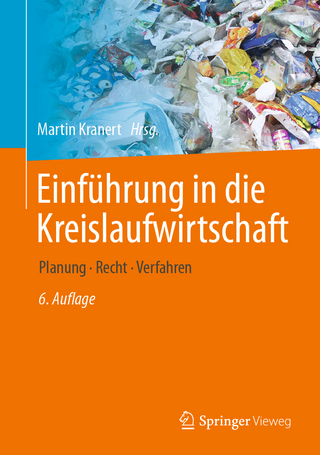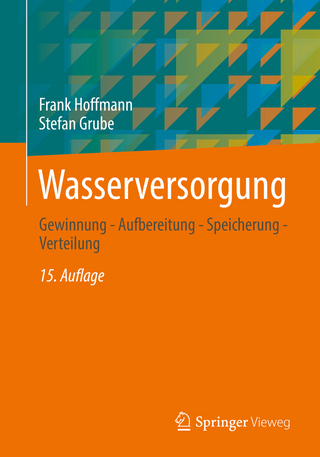
LiDAR Principles, Processing and Applications in Forest Ecology
Academic Press Inc (Verlag)
978-0-12-823894-3 (ISBN)
Sections give a brief history and introduce the principles of LiDAR, as well as three commonly seen LiDAR platforms. The book lays out step-by-step coverage of LiDAR data processing and forest structure parameter extraction, complete with Python examples. Given the increasing usefulness of LiDAR in forest ecology, this volume represents an important resource for researchers, students and forest managers to better understand LiDAR technology and its use in forest ecology across the world. The title contains over 15 years of research, as well as contributions from scientists across the world.
Dr. Qinghua Guo is currently a professor in Peking University, and serves as the director of the Institute of Remote Sensing & Geographical Information System, Peking University. He received the B.S. and M.S. degrees in Peking University, and the Ph.D degrees in University of California Berkeley. His recent research interests lie in developing near-surface (e.g., backpack, UAV and mobile) Lidar hardware and data processing software systems and combining them with airborne and spaceborne remote sensing data to map vegetation attributes (e.g., tree height, LAI, AGB, vegetation type) from individual plant scale to national and global scales. So far, he has published over 160 peer-reviewed papers. Dr. Yanjun Su is a professor in the Institute of Botany, Chinese Academy of Sciences. He received a B.E. degree from the China University of Geosciences (Beijing) in 2009, a M.S. degree from the Institute of Geographic Sciences and Natural Resources Research, Chinese Academy of Sciences, and a Ph.D. degree from the University of California Merced in 2017. His research interests lie in using lidar to quantify vegetation structures and combining lidar-derived vegetation structures with other remote sensing techniques to understand how human activities and global climate change influence terrestrial ecosystems. So far, he has published over 70 peer-reviewed papers, and has received several academic awards, such as the “William A. Fisher Memorial Scholarship from the American Society of Photogrammetry and Remote Sensing. Dr. Tianyu Hu is an associate professor in the Institute of Botany, Chinese Academy of Sciences. He received a B.S. degree in ecology from China Agriculture University, Beijing, China, in 2008, and a Ph.D. degree from the Institute of Botany, Chinese Academy of Sciences, Beijing, in 2014. His research focuses on using light detection and ranging (LiDAR) technology and dynamic global vegetation model to understand forest ecosystem, especially in forest structure, function, and biodiversity. Currently, He has published more than 30 peer-reviewed journal papers in the ecology and remote sensing, including Global Biogeochemical Cycles, Forest Ecology and Management, Remote Sensing of Environment, International Journal of Applied Earth Observations and Geoinformation and Remote Sensing etc
1. The Origin and Development of LiDAR Active Remote Sensing Technology
2. Working principle of LiDAR 2.1 Ranging principle of LiDAR
3. Field work flow and system error source of LiDAR
4. LiDAR data format
5. LiDAR data filtering and digital elevation model generation
6. Data Analysis and Feature Extraction of Terrestrial LiDAR
7. Data Analysis and Feature Extraction of Airborne LiDAR
8. Data Analysis and Feature Extraction of Spaceborne LiDAR
9. Forest Structural Parameters Extraction
10. Ecosystem Function Parameters Inversion and Large-scale Simulation
11. Applications of LiDAR in dynamic monitoring of forest ecosystem
12. Applications of LiDAR technology in forest biodiversity, hydrology, and ecological models
13. 3D visualization and reconstruction of vegetation based on LiDAR technology
14. Emerging and ecological application of the near-surface LiDAR platform
15. Challenges and applications of LiDAR
| Erscheinungsdatum | 02.03.2023 |
|---|---|
| Zusatzinfo | 708 illustrations (100 in full color); Illustrations |
| Verlagsort | San Diego |
| Sprache | englisch |
| Maße | 152 x 229 mm |
| Gewicht | 840 g |
| Themenwelt | Naturwissenschaften ► Biologie ► Ökologie / Naturschutz |
| Naturwissenschaften ► Geowissenschaften ► Geografie / Kartografie | |
| Weitere Fachgebiete ► Land- / Forstwirtschaft / Fischerei | |
| ISBN-10 | 0-12-823894-1 / 0128238941 |
| ISBN-13 | 978-0-12-823894-3 / 9780128238943 |
| Zustand | Neuware |
| Informationen gemäß Produktsicherheitsverordnung (GPSR) | |
| Haben Sie eine Frage zum Produkt? |
aus dem Bereich


